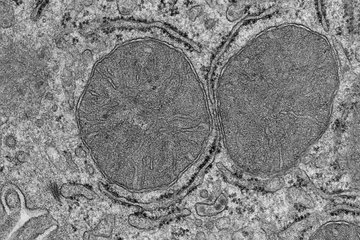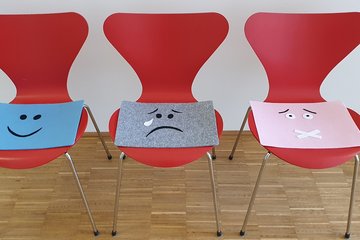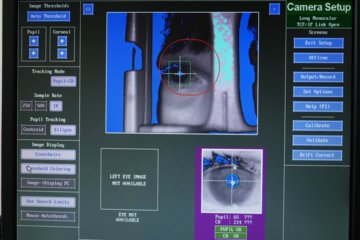Air pollution as co-factor of Covid-19 mortality
Study estimates 15 percent of Covid-19 deaths worldwide could be attributed to air pollution
Air pollution apparently increases the risk of death from Covid-19. This is a conclusion reached by an international team of researchers, including scientists from the Max Planck Institute for Chemistry in Mainz. According to the study, 15 percent of all Covid-19 deaths worldwide are due to exposure to particulate matter from human sources, such as the combustion of fossil fuels; in Germany the figure is as high as 26 percent. Apparently, particulate matter damages blood vessels in a similar way to Sars-CoV-2 and makes it easier for the virus to infect cells in the lungs.
Long-term exposure to air pollution has been linked to an increased risk of dying from Covid-19 and, for the first time, a study has estimated the proportion of deaths from the coronavirus that could be attributable to particulate matter air pollution for every country in the world.

The study, published in the scientific journal Cardiovascular Research today, estimated that about 15 percent of deaths worldwide from Covid-19 could be attributed to long-term exposure to air pollution. In Europe the proportion was about 19 percent, in North America it was 17 percent, and in East Asia 27 percent. In their paper, an international team of researchers write that these proportions are an estimate of “the fraction of Covid-19 deaths that could be avoided if the population were exposed to lower counterfactual air pollution levels without fossil fuel-related and other anthropogenic emissions."
26 percent of the Covid-19 fatalities in Germany are due to air pollution
Andrea Pozzer from the Max Planck Institute for Chemistry and first author of the study, stated that the attributable fraction does not however demonstrate a direct cause-effect relationship between air pollution and Covid-19 mortality. It is rather an indirect effect: “Our estimates show the importance of pollution on fatal health outcomes of the virus infection, i.e. by aggravating co-morbidities." Co-morbidities are other factors which impair the health of people.
Estimates show a very diverse picture for individual countries, for example, that anthropogenic air pollution contributed to 29 percent of coronavirus deaths in the Czech Republic, 27 percent in China, 26 percent in Germany. The proportion is lower for instance in Italy (15 percent) or Brazil (12 percent). Single figures are estimated for Israel (6 percent), Australia (3 percent) and New Zealand (1 percent). The study also presents the statistical confidence intervals of the calculations, being 5 to 33 percent worldwide.
Andrea Pozzer, who is also affiliated to the International Centre for Theoretical Physics in Trieste in Italy, said: “Although our results have uncertainties, we can clearly distinguish the contribution of air pollution to Covid-19 mortality. Nevertheless, the actual mortality is influenced by many additional factors such as the country's health system.”
Jos Lelieveld, who is director at the Max Planck Institute for Chemistry in Mainz and professor at the Cyprus Institute, Climate and Atmosphere Research Center, Nicosia, Cyprus, stated: “Since the numbers of deaths from Covid-19 are increasing all the time, it’s not possible to give final numbers of Covid-19 deaths per country that could be attributed to air pollution. However, as an example, in the UK there have been more than 44,000 coronavirus deaths and we estimate that the fraction attributable to air pollution is 14 percent, meaning that about 6,000 deaths could have been avoided if the air were clean. In the USA, the 220,000 Covid deaths with a fraction of 18 percent yields more than 40,000 deaths attributable to air pollution.”
Particulate matter damages blood vessels and enhances virus uptake
Thomas Münzel, Professor at the Cardiology Center of the University Medical Center Mainz, explains the health effects of air pollution: “When people inhale polluted air, the very small polluting particles, the PM2.5, migrate from the lungs to the blood and blood vessels, causing inflammation and severe oxidative stress, which is an imbalance between free radicals and oxidants in the body that normally repair damage to cells.” This causes damage to the inner lining of arteries, the endothelium, and leads to the narrowing and stiffening of the arteries. Sars-CoV-2 also enters the body via the lungs, causing similar damage to blood vessels, and it is now considered to be an endothelial disease.
Münzel added: “If both long-term exposure to air pollution and infection with the Covid-19 virus come together then we have an additive adverse effect on health, particularly with respect to the heart and blood vessels, which leads to greater vulnerability and less resilience to Covid-19. If you already have a heart disease, then air pollution and coronavirus infection will aggravate disorders that can lead to heart attacks, heart failure and strokes. Particulate matter seems to increase the activity of a receptor on cell surfaces, called ACE-2, that is known to be involved in the way Covid-19 infects cells. Hence, we have a ‘double hit’: air pollution damages the lungs and increases the activity of ACE-2, which in turn leads to enhanced uptake of the virus by the lungs and probably by the blood vessels and the heart.”
There are no vaccines against air pollution

The team used results from a previous epidemiological study based on US data to estimate a relationship between Covid-19 mortality and polluting fine particulates smaller than 2.5 micrometers in diameter (known as PM2.5). The relationship was confirmed by results from similar Chinese studies based on the Sars outbreak, which analysed PM2.5 pollution and the consequences of the Sars-CoV-1 epidemic in 2003. These studies confirmed that in areas with moderate air pollution, the risk of dying from the disease compared to areas with relatively clean air was more than 80 percent higher, while in heavily polluted regions the risk was twice as high. Thanks to global PM2.5 data obtained from satellite data, ground-based air pollution networks and numerical model, the authors determined the regional proportion of Covid-19 deaths attributable to air pollution. However, since the results are based on epidemiological data from the US collected up to the third week in June 2020, the researchers say a conclusive evaluation will need to follow after the pandemic has subsided.
In their paper, the authors end with a clear message to decision makers: “Our results suggest the potential for substantial benefits from reducing air pollution exposure, even at relatively low PM2.5 levels. A lesson from our environmental perspective of the Covid-19 pandemic is that the quest for effective policies to reduce anthropogenic emissions, which cause both air pollution and climate change, needs to be accelerated. The Covid-19 pandemic ends with the vaccination of the population or with herd immunity through extensive infection. However, there are no vaccines against poor air quality and climate change. The remedy is to mitigate emissions. The transition to a green economy with clean, renewable energy sources will further both environmental and public health locally through improved air quality and globally by limiting climate change.”













